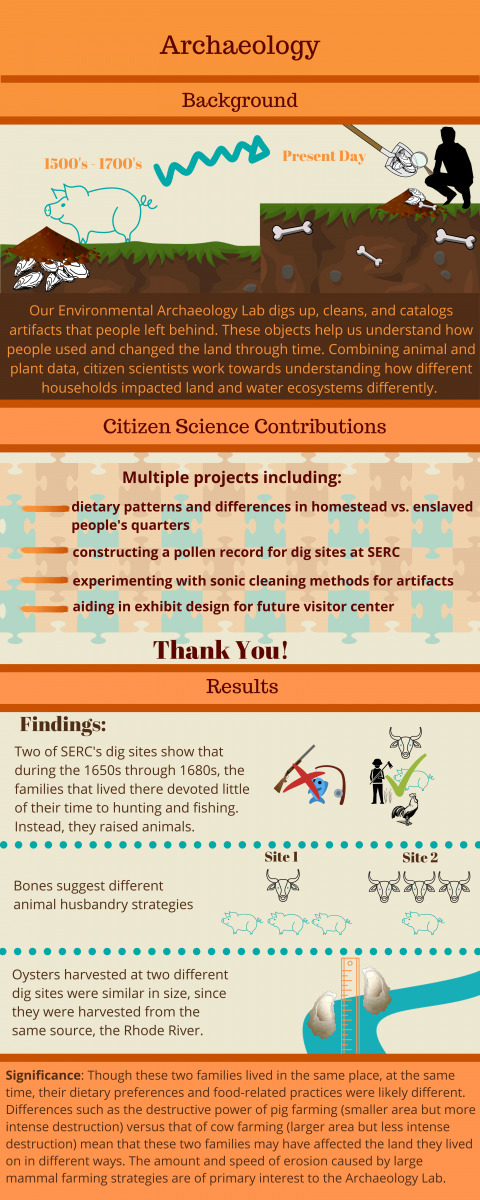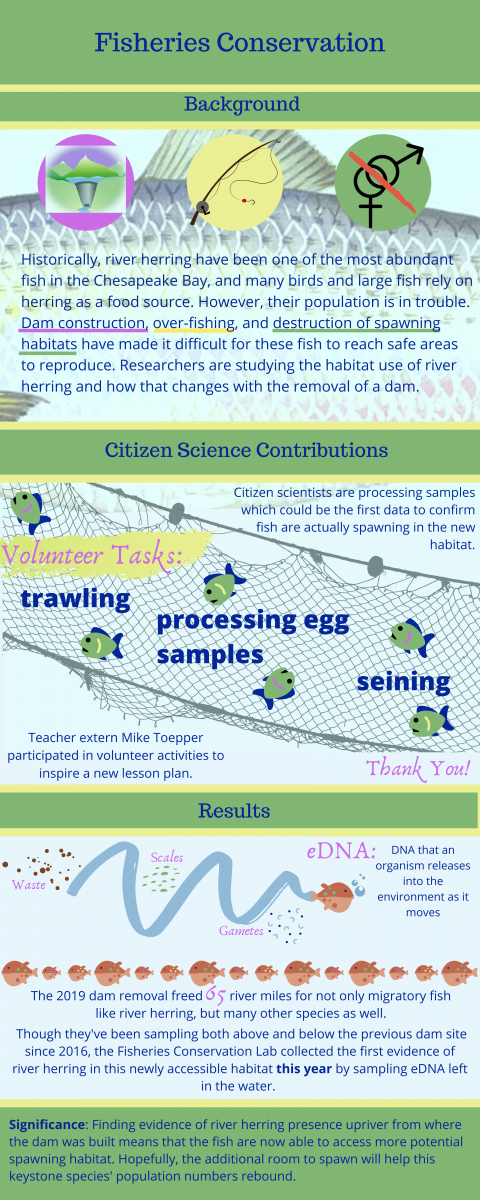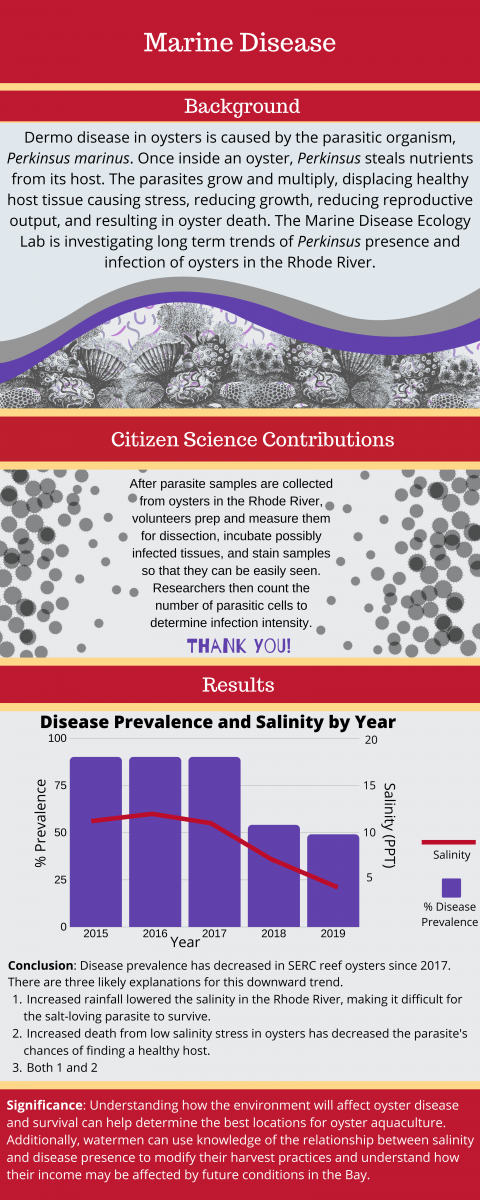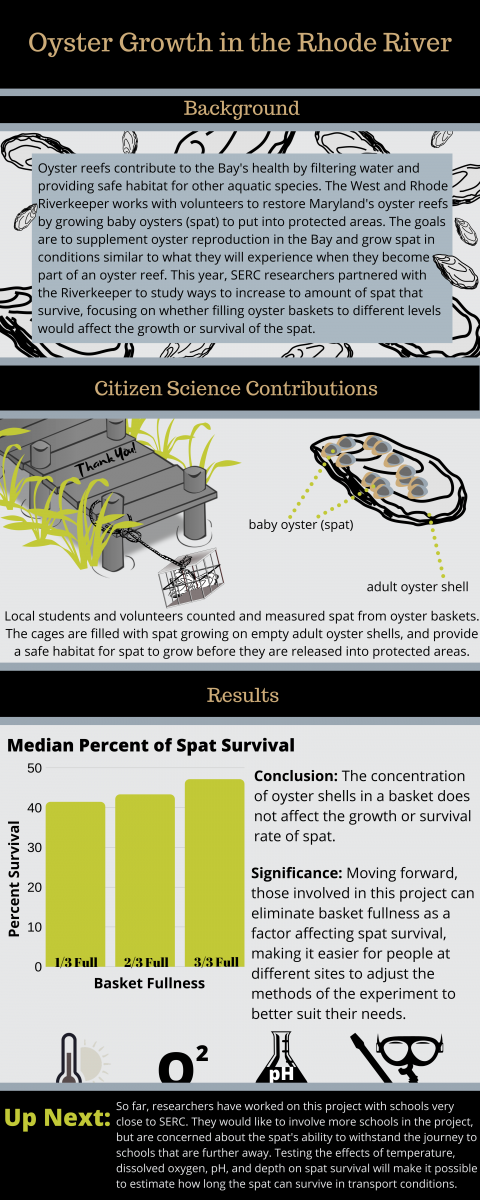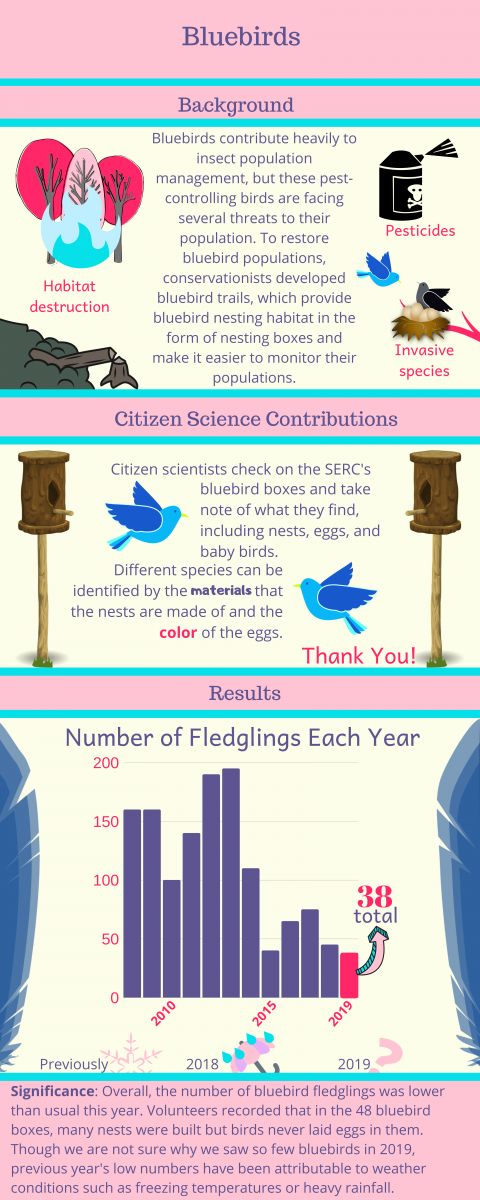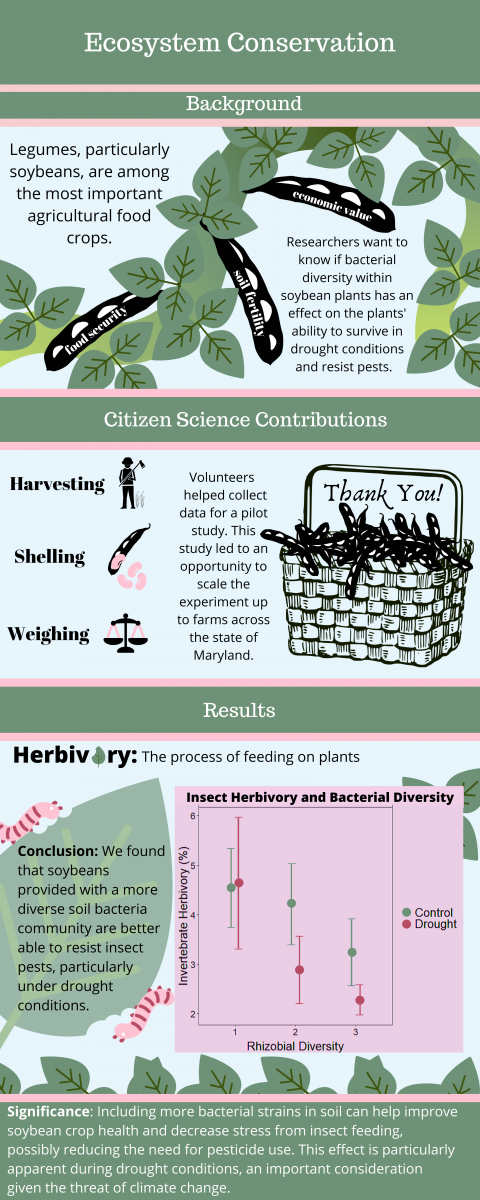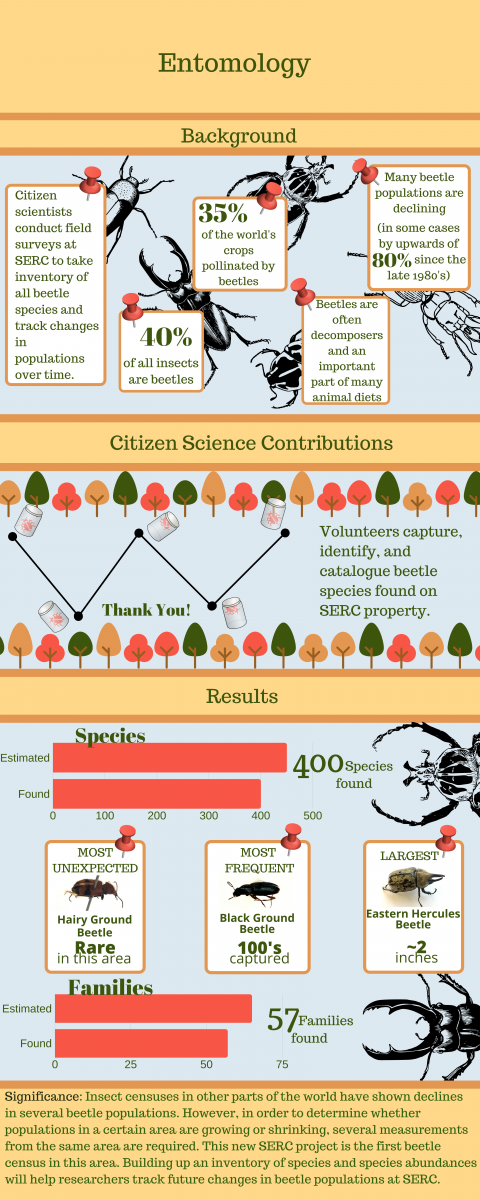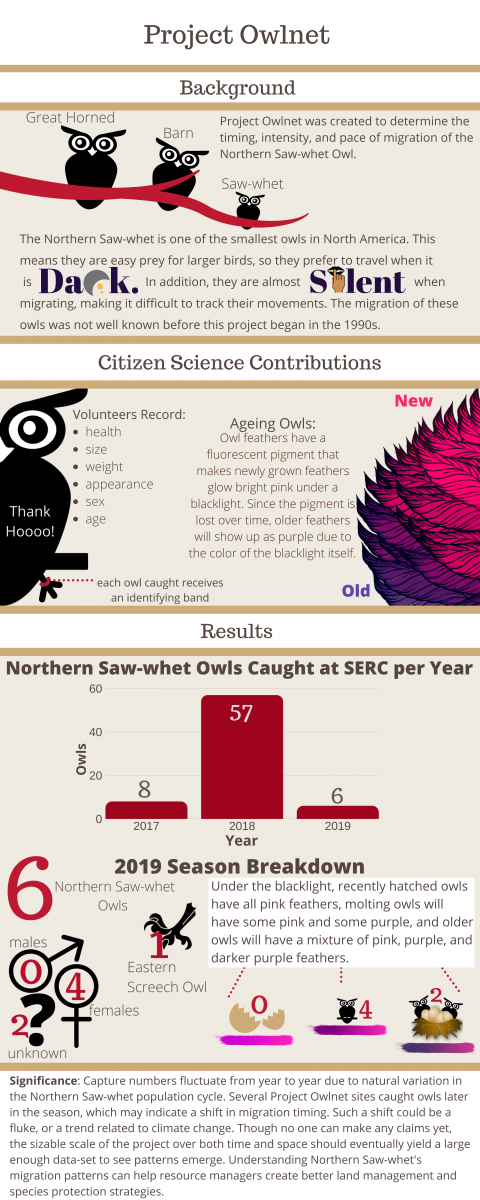2019 Participatory Science Annual Report
Participatory Science is special because volunteer efforts help to produce new knowledge and discoveries. However, usually, our volunteers only get to see a tiny slice of the research that they are contributing to. So, we think that it is important to show you the results of your efforts. We could not have done any of this work without you!
During the 2019 year, all but one of SERC's labs worked with volunteer scientists. We had a total of nearly 550 volunteers who contributed nearly 17,500 hours to SERC's research programs. When we count volunteers who helped online and students who helped in classrooms, there were more than 3,100 people contributing to SERC research and education this year! Thank you to all our volunteer scientists who contributed to our projects this past year! You help us to do more and better science than we could on our own. We also really just like having you around.
We are excited to share some of the results of our Participatory Science projects from the last year. This year our Participatory Science team (Nicole Esch, Cosette Larash, and Alison Cawood) created infographics for each project. Check out what we were up to, by clicking on a project to learn more about it or download the PDF version HERE:
Topic |
Project Name |
| Environmental Chemistry | The Salt Marsh Plant Census |
| History | Archaeology (volunteer run) |
| Marine and Estuarine Ecology |
Fish Conservation |
| Marine Invasions |
The Chesapeake Bay Parasite Project |
| Terrestrial Ecology |
Bluebirds (Volunteer run) |
| Education and Outreach |
Learn more about the project or if you are interested in getting involved contact Alison Cawood (cawooda@si.edu) for more information!
Learn more about the project or if you are interested in getting involved contact Rachael Mady (madyr@si.edu) for more information.
Learn more about the project or if you are interested in getting involved contact Rachael Mady (madyr@si.edu) for more information.
Learn more about the project or if you are interested in getting involved contact Rachael Mady (madyr@si.edu) for more information.
To learn more about the Oyster Growth in the Rhode River click HERE.
Learn more about the project or if you are interested in getting involved contact Rachael Mady (madyr@si.edu) for more information.
Learn more about the Floating Ocean Ecosystem Tracker project.
Learn more about the Invader ID project or if you are interested in getting involved contact Rachael Mady (madyr@si.edu) for more information.
Interested in learning more about Plate Watch project, click HERE.
Interested in learning more about the Bluebird Project, click HERE.
Learn more about Ecosystem Conservation Lab and the various projects they work on.
Learn more about or how to get involved with the Entomology project at SERC by contacting Rachael Mady (madyr@si.edu) for more information.
Learn more about the Fossil Atmospheres Project or if you are interested in getting involved, contact Rachael Mady (madyr@si.edu) for more information.
Check out what is going on with the Orchids in the Classroom Project.
Learn more about the Photobiology and Solar Radiation Lab.
Lab Volunteers
In addition to our more structured Participatory Science projects, SERC also has a group of volunteers who aren’t part of specific projects, but work on a wide variety of activities within a lab. These volunteers are generally at SERC on a regular basis (one or more days per week), and they often have specialized skills and knowledge that they bring to the labs. They help with chemical analyses, build and maintain equipment, create content for websites, help in the library, assist in the field, and a wide variety of other activities. Nearly all of the labs at SERC have at least one of these volunteers, many of whom contribute hundreds of hours per year to SERC research. They are integral parts of the labs and the SERC community, and we very much appreciate their time, talents, and dedication!










